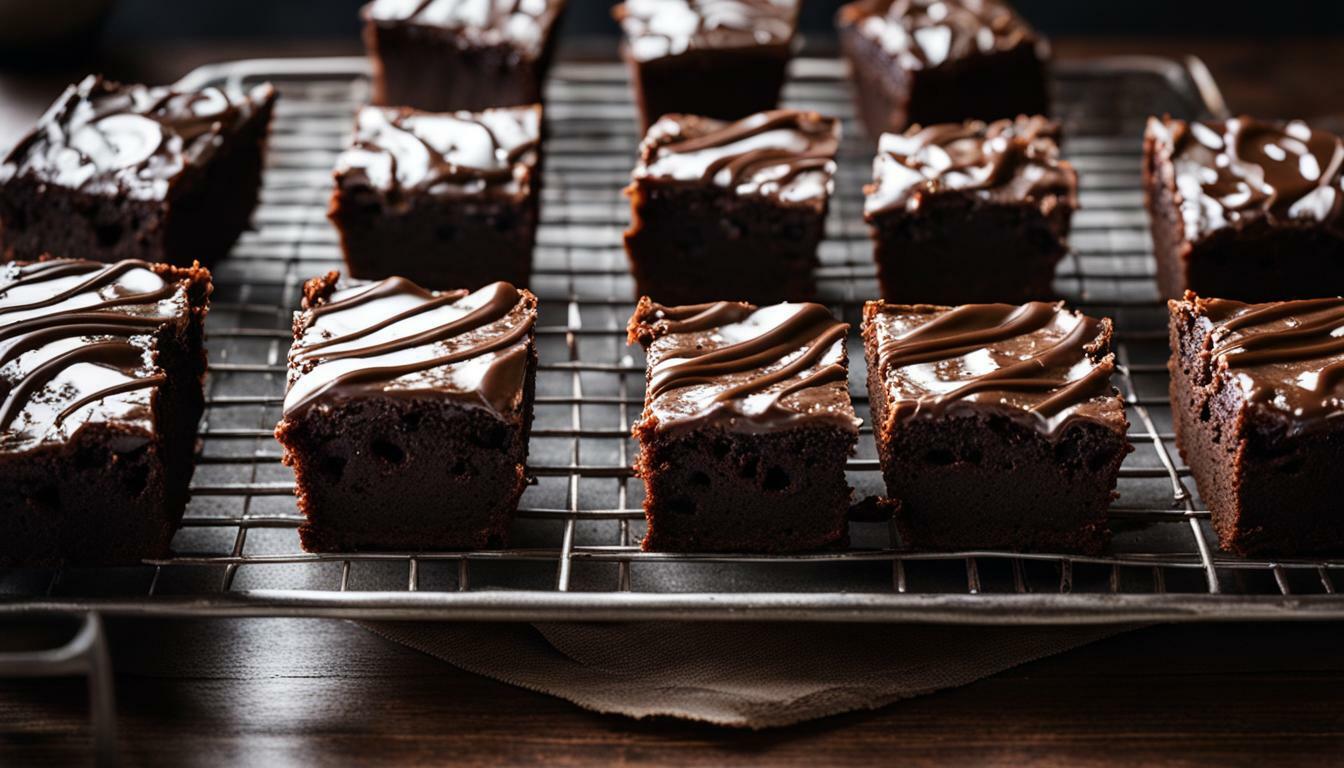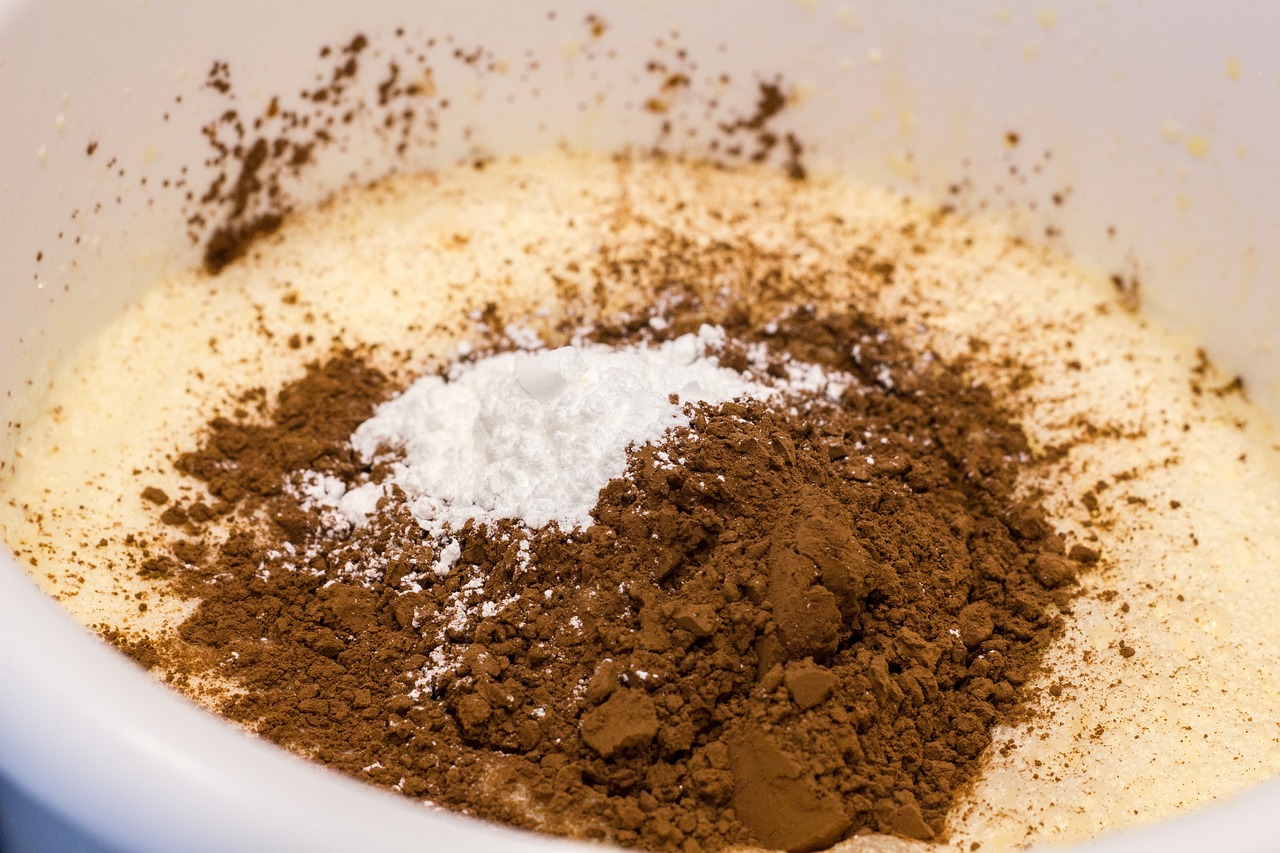
Baking brownies is a delicious and enjoyable experience, but achieving perfectly baked brownies can be tricky. Determining the right baking time for brownies can be challenging, resulting in undercooked or overcooked brownies. Fear not, as we’re here to guide you through the process of mastering the perfect batch of brownies.
In this section, we’ll explore the art of baking brownies and provide expert tips to determine if they are done baking. We’ll cover the general baking time for brownies, factors that can affect it, and visual cues to check for doneness. You’ll also learn about tests to perform, such as the toothpick test, and how to achieve the right internal temperature for perfectly baked brownies.
Key Takeaways:
- Determining the right baking time is crucial for perfectly baked brownies
- Factors such as recipe, oven temperature, and pan size can affect brownie baking time
- Visual cues such as a crackly top and slightly firm edges can indicate done brownies
- The toothpick test and checking the internal temperature are reliable indicators of doneness
Understanding Baking Time for Brownies
Baking time is one of the essential factors that can determine the doneness of your brownies. Typically, baking times for brownies range from 20-30 minutes at 350°F (175°C), but this can vary based on different factors.
The recipe you are using can significantly affect your baking time. Brownies with more sugar and fat tend to take longer to bake than those with fewer amounts of these ingredients. Furthermore, the type of chocolate and cocoa powder you use can affect the baking time as well.
Another critical factor to consider is your oven temperature. Ovens vary in their temperature accuracy, so it’s recommended to use a reliable oven thermometer to ensure consistent results. Also, the pan size plays a part in how long your brownies take to bake. A larger pan will result in thinner brownies and a shorter baking time, while a smaller pan will result in thicker brownies with a longer baking time.

Here is a general guideline for baking time:
| Brownie Type | Baking Time |
|---|---|
| Thin and Fudgy | 20-25 minutes |
| Thick and Fudgy | 30-35 minutes |
| Cake-Like Brownies | 25-30 minutes |
Remember that these are just rough estimates and should be adjusted based on your recipe, oven, and pan size. Always rely on visual cues and the toothpick test to ensure your brownies are perfectly done.
Visual Clues to Check Brownies for Doneness
Aside from relying solely on baking time, there are visual cues that indicate if brownies are done baking.
One sign of done brownies is a crackly top. As the brownies bake, the surface should develop a thin crust that cracks slightly when touched.
The edges of the brownies should also be slightly firm. Gently press the edges with a finger or spatula to see if they give a little resistance.
The middle of the brownies should be glossy and set. If it looks wet or jiggly, they may need more time in the oven.
By observing these visual cues, you can determine if your brownies are perfectly baked.
The Toothpick Test for Perfectly Baked Brownies
The toothpick test is a classic method for determining brownie doneness. To perform this test:
- Insert a toothpick into the center of the brownie batch.
- Leave the toothpick for 5-10 seconds
- Remove the toothpick and observe the results:
- If the toothpick comes out clean or with a few moist crumbs, the brownies are done.
- If the toothpick comes out with wet batter, the brownies need additional baking time.
It’s important to note that in some cases, the toothpick test may not be entirely accurate due to the placement of the toothpick or the brownie’s texture. Therefore, it’s recommended to use the toothpick test in addition to other methods to ensure optimal doneness.
Incorporating the toothpick test along with the visual clues discussed earlier can provide a reliable measure of brownie doneness. By mastering these methods, you can confidently determine when your brownies are perfectly baked and ready for indulgence.
Achieving the Right Internal Temperature for Brownies
Visual cues and the toothpick test are useful, but checking the internal temperature of brownies provides an accurate measure of their doneness. The recommended internal temperature for perfectly baked brownies is 190-205°F or 87-96°C.
To measure the internal temperature of brownies, use a food thermometer, inserting it into the thickest part of the brownie. Avoid touching the sides or bottom of the pan, as this can give inaccurate readings.
If your brownies have not yet reached the desired temperature, continue baking for a few more minutes and retest until they reach the optimal temperature range.
Remember that the temperature of brownies can continue to rise even after removing them from the oven, so it’s best to take them out a few degrees before the target temperature.
Other Doneness Tests for Brownies
Aside from the toothpick test and checking the internal temperature, there are other methods to determine the doneness of your brownies. These additional tests rely on visual and textural cues that can help determine if brownies are done enough. Here are some other doneness tests you can try:
- Press Test: Gently press the surface of the brownies with your finger. If the brownies spring back and the surface is slightly firm, they are likely done. But if your finger leaves an indentation on the surface, they may need more time to bake.
- Texture Test: Observe the texture of the brownies by looking at the edges. If they are slightly crispy and pulling away from the sides of the pan, they are likely done. If the edges are still soft and moist, they may need more time to bake.
- Color Test: Look for a uniform color on the surface of the brownies. If they have a golden brown hue and appear slightly matte, they are likely done. But if they are still pale or have spots of uncooked batter, they may need more time to bake.
It’s important to note that each of these additional tests should be used in conjunction with monitoring baking time and checking the internal temperature or using the toothpick test. By using a combination of methods, you’ll have a better chance of achieving perfectly baked brownies.
Factors Affecting Brownie Baking Time
The baking time of brownies can be affected by several factors, which can impact the final texture and taste of the finished product. It is important to understand these variables to achieve perfectly baked brownies every time.
Variations in Oven Temperature
Oven temperatures can vary, which can affect the baking time of brownies. Always preheat your oven and use an oven thermometer to ensure it is at the correct temperature. If your oven temperature is too low, your brownies may take longer to bake. If it is too high, they may bake too quickly and overcook.
Different Recipe Ingredients
The ingredients used in your brownie recipe can also affect the baking time. For example, if your recipe contains more sugar or fat, it may take longer to bake. Similarly, if you use a different type of flour, it may require adjustments to the baking time.
Adjustments for Brownies with Add-Ins
If your brownie recipe includes add-ins such as nuts or chocolate chips, this can also impact the baking time. These additions can affect the density and moisture content of the brownies, which can change the required baking time. You may need to increase the baking time slightly for brownies with add-ins.
Understanding these factors and making adjustments as needed will help you achieve perfectly baked brownies every time. Keep in mind that baking times can vary depending on your recipe, oven, and altitude, so always keep a close eye on your brownies and check for doneness using the methods discussed in this guide.
Troubleshooting Undercooked or Overcooked Brownies
Despite your best efforts, sometimes brownies can come out undercooked or overcooked. Don’t worry; there are some common issues you can address to salvage your batch of brownies.
- Undercooked Brownies: If your brownies are still gooey in the center even after the recommended baking time, it’s likely because the oven temperature was too low or you didn’t bake them long enough. To fix this, return the brownies to the oven and bake them for an additional 5-10 minutes until they are cooked through.
- Overcooked Brownies: If your brownies are dry or have a hard texture, they may have been overcooked. This can happen if you baked them for too long or at too high of a temperature. To fix overcooked brownies, try adding a thin layer of chocolate ganache or frosting on top to add moisture. You could also try microwaving the brownies for a few seconds to soften them.
Remember to check brownies for doneness before pulling them out of the oven to prevent these issues from happening.
Tips for Moist and Flavorful Brownies
Aside from achieving perfectly baked brownies, creating moist and flavorful brownies is the ultimate goal for any baker. Here are some tips to help you achieve this:
- Use high-quality cocoa powder and chocolate: The better the quality of ingredients, the tastier the brownies will be.
- Add espresso powder: Adding a small amount of espresso powder enhances the chocolatey flavor without adding any coffee taste. Try adding 1 teaspoon to the dry ingredients.
- Use room temperature ingredients: Using room temperature eggs and butter allows them to mix better, resulting in smoother batter and softer brownies.
- Avoid over-mixing: Over-mixing the batter can result in tough, dry brownies. Mix just until the ingredients are combined.
- Line the pan with parchment paper: This makes it easy to remove the brownies from the pan and ensures they don’t stick.
- Let the brownies cool completely: Allowing the brownies to cool completely in the pan helps them set and intensifies the flavor.
- Store brownies properly: Store brownies in an airtight container to prevent them from drying out. They can also be frozen for up to 3 months.
By following these tips, you’ll be able to achieve perfectly baked and deliciously flavorful brownies every time. Enjoy!
Conclusion
By mastering the art of determining brownie doneness, you can consistently create moist, flavorful, and perfectly baked brownies. With the knowledge gained from this comprehensive guide, you’ll confidently navigate baking times, perform accurate doneness tests, and troubleshoot any issues that may arise.
Remember that baking time plays a crucial role in achieving the desired texture and flavor of your brownies. Be aware of the factors that can affect it, such as recipe variations and oven temperature. Visual clues like a crackly top and firm edges, along with the toothpick test and checking the internal temperature, can indicate whether your brownies are perfectly baked.
However, even with careful monitoring, sometimes brownies can still turn out undercooked or overcooked. Don’t worry – we’ve got you covered with our troubleshooting tips. And to elevate your brownie game even more, try incorporating unique flavors and using the right ingredients to achieve moist and flavorful brownies every time.
So go forth and bake with confidence, knowing that you have the expertise to master the perfect batch of brownies. Indulge in the satisfaction of creating irresistible treats that will impress your friends and family. Happy baking!
FAQ
Q: How do I know if my brownies are done baking?
A: There are several methods to determine if your brownies are done baking. Visual clues include a crackly top, slightly firm edges, and a shiny, set middle. You can also perform the toothpick test by inserting a toothpick into the center of the brownies. If it comes out with a few moist crumbs, they are done. Another option is to check the internal temperature with a food thermometer. For perfectly baked brownies, the internal temperature should reach around 195-205°F.
Q: What factors can affect the baking time of brownies?
A: The baking time of brownies can be influenced by various factors, including variations in oven temperature, different recipe ingredients, and adjustments for brownies with add-ins such as nuts or chocolate chips. It’s important to follow the specific instructions for your recipe and make any necessary adjustments based on these factors.
Q: What should I do if my brownies are undercooked or overcooked?
A: If your brownies are undercooked, you can try placing them back in the oven for a few more minutes. Alternatively, you can cut the undercooked portions and return the rest to the oven. For overcooked brownies, it may be challenging to salvage them. However, you can try adding a moist topping or serving them with ice cream to mitigate the dryness.
Q: How can I make my brownies moist and flavorful?
A: To achieve moist and flavorful brownies, it’s important to use high-quality ingredients, such as good quality chocolate and unsalted butter. Incorporating add-ins like nuts or chocolate chips can also enhance the texture and taste. Additionally, you can experiment with different flavorings, such as using espresso powder or adding a dash of vanilla extract, to elevate the overall flavor profile of your brownies.
Q: Why is it important to master the art of determining brownie doneness?
A: Mastering the art of determining brownie doneness ensures that you consistently achieve perfectly baked brownies. By understanding the visual clues, performing doneness tests, and troubleshooting any issues, you can avoid undercooked or overcooked results. This knowledge will allow you to enjoy moist, flavorful brownies every time you bake.
